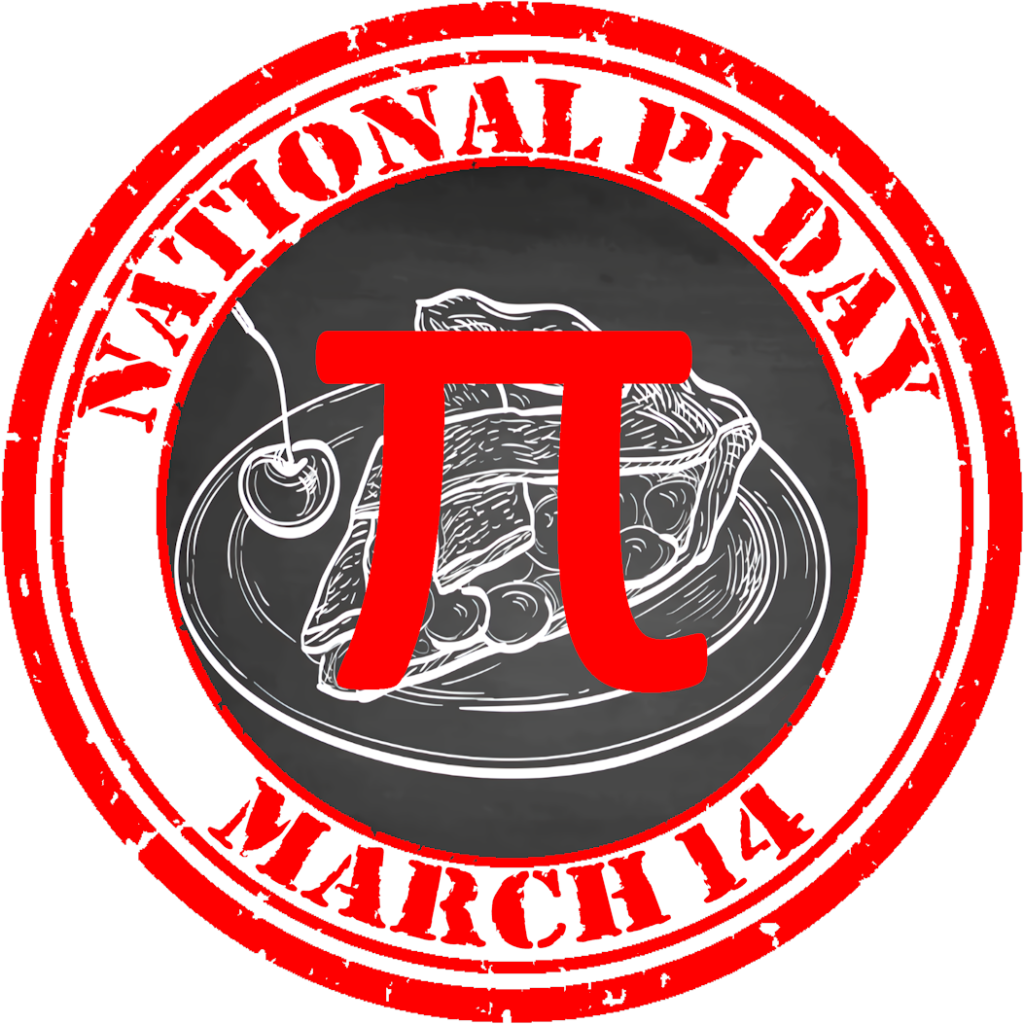Considering that “Pi” is just a number, the fact that National Pi Day annually generates so much interest is remarkable. Nobody gets the day off. There are few historic tales to tell about Pi and there are few Pi heroes to remember. So, what makes Pi so special? Journalist Brett Molina notes, “Although Pi is typically rounded down to 3.14, it can go on forever. According to Guinness World Records, the most accurate value for Pi is more than 62 trillion digits (62,831,853,071,796 to be precise). It was calculated [in August 2021] by the University of Applied Sciences in Switzerland.”[1] The fact that Pi can “go on forever” is not what makes it so special. According to Molina, “Pi [is] one of the most important numbers ever, representing the ratio of a circle’s circumference to its diameter.”
In the annals of celebrations, National Pi Day is a relative newcomer. Historian Brynn Holland reports, “Founded in 1988 by physicist Larry Shaw, March 14 was selected because the numerical date (3.14) represents the first three digits of Pi, and it also happens to be Albert Einstein’s birthday.”[2] She adds, “It wasn’t until 2009, however, that it became an official national holiday when the U.S. House of Representatives passed legislation.” A decade later, in November 2019, UNESCO’s 40th General Conference designated Pi Day as the International Day of Mathematics. Although National Pi Day hasn’t been around all that long, the number represented by Pi (π) goes back thousands of years.
Wikipedia reports, “Ancient civilizations, including the Egyptians and Babylonians, required fairly accurate approximations of π for practical computations. Around 250 BC, the Greek mathematician Archimedes created an algorithm to approximate π with arbitrary accuracy. In the 5th century AD, Chinese mathematicians approximated π to seven digits, while Indian mathematicians made a five-digit approximation, both using geometrical techniques. The first computational formula for π, based on infinite series, was discovered a millennium later. The earliest known use of the Greek letter π to represent the ratio of a circle’s circumference to its diameter was by the Welsh mathematician William Jones in 1706.” Jones reportedly selected the Greek letter Pi because it is the first letter of the Greek word perimetros, which means circumference.
The staff at National Today insists Jones wasn’t the first mathematician to use the symbol π. They report, “[The ratio] was first baptized with the Greek letter as its name when William Oughtred called it as such in his works dating back to 1647, later embraced by the scientific community when Leonhard Euler used the symbol in 1737.”[3] They don’t even mention Jones. Do we have a controversy in the making? Not really. Wikipedia agrees, “The first recorded use is Oughtred’s.” However, his use of the letter π was part of an equation. Wikipedia attributes Jones with “the earliest known use of the Greek letter π alone to represent the ratio of a circle’s circumference to its diameter.” Molina adds, “[π] wasn’t made popular until Swiss mathematician Leonhard Euler used it in 1737.” Despite any controversy about who should get credit for popularizing Pi, the number is one of the most important constants in mathematics. Science reporter Aristos Georgiou explains:
“Pi itself is incredibly useful because it relates to the circle and so is found in many formulae in fields such as trigonometry (a branch of mathematics which examines the relationship between the lengths and angles of triangles) and geometry (the field of mathematics concerned with shapes, size, relative positions and the properties of space) — which are essential to sectors like architecture and robotics, among others. But pi also has countless applications beyond geometry and trigonometry. For example, it can help scientists to understand objects and phenomena in nature which contain circular shapes, such as the orbit of the planets or the concentric waves created by a stone falling into a pond. In fact, pi is useful for describing everything from the way light and sound waves ripple to the ‘bendiness’ of rivers, and it even crops up in calculations where circles are nowhere to be seen, such as Euler’s Identity — a probability formula that has been described as the ‘most beautiful’ in mathematics.”[4]
Steven Strogatz, a professor of mathematics at Cornell, insists, “Pi does deserve a celebration, but for reasons that are rarely mentioned.”[5] He explains, “The beauty of pi, in part, is that it puts infinity within reach. Even young children get this. The digits of pi never end and never show a pattern. They go on forever, seemingly at random — except that they can’t possibly be random, because they embody the order inherent in a perfect circle. This tension between order and randomness is one of the most tantalizing aspects of pi. … But there’s still more to pi. … What distinguishes pi from all other numbers is its connection to cycles. For those of us interested in the applications of mathematics to the real world, this makes pi indispensable. Whenever we think about rhythms — processes that repeat periodically, with a fixed tempo, like a pulsing heart or a planet orbiting the sun — we inevitably encounter pi.”
You might be math challenged, but I’ll bet you know about Pi. You probably even know that it represents the constant 3.14. That little bit of knowledge should be sufficient for you to join in on today’s celebration of one of the universe’s greatest numbers. Happy Pi Day. Go and enjoy a piece of the other kind of pie to celebrate.
Footnotes
[1] Brett Molina, “What is Pi Day? Why mathematicians and bakers unite to celebrate,” USA Today, 14 March 2022.
[2] Brynn Holland, “What Is Pi Day?” History.com, 14 March 2022.
[3] Staff, “National Pi Day – March 14, 2023,” National Today, 2023.
[4] Aristos Georgiou, “Pi Day: What Is Pi and Why Is It so Important?” Newsweek, 14 March 2018.
[5] Steven Strogatz, “Why Pi Matters,” The New Yorker, 13 March 2015.





